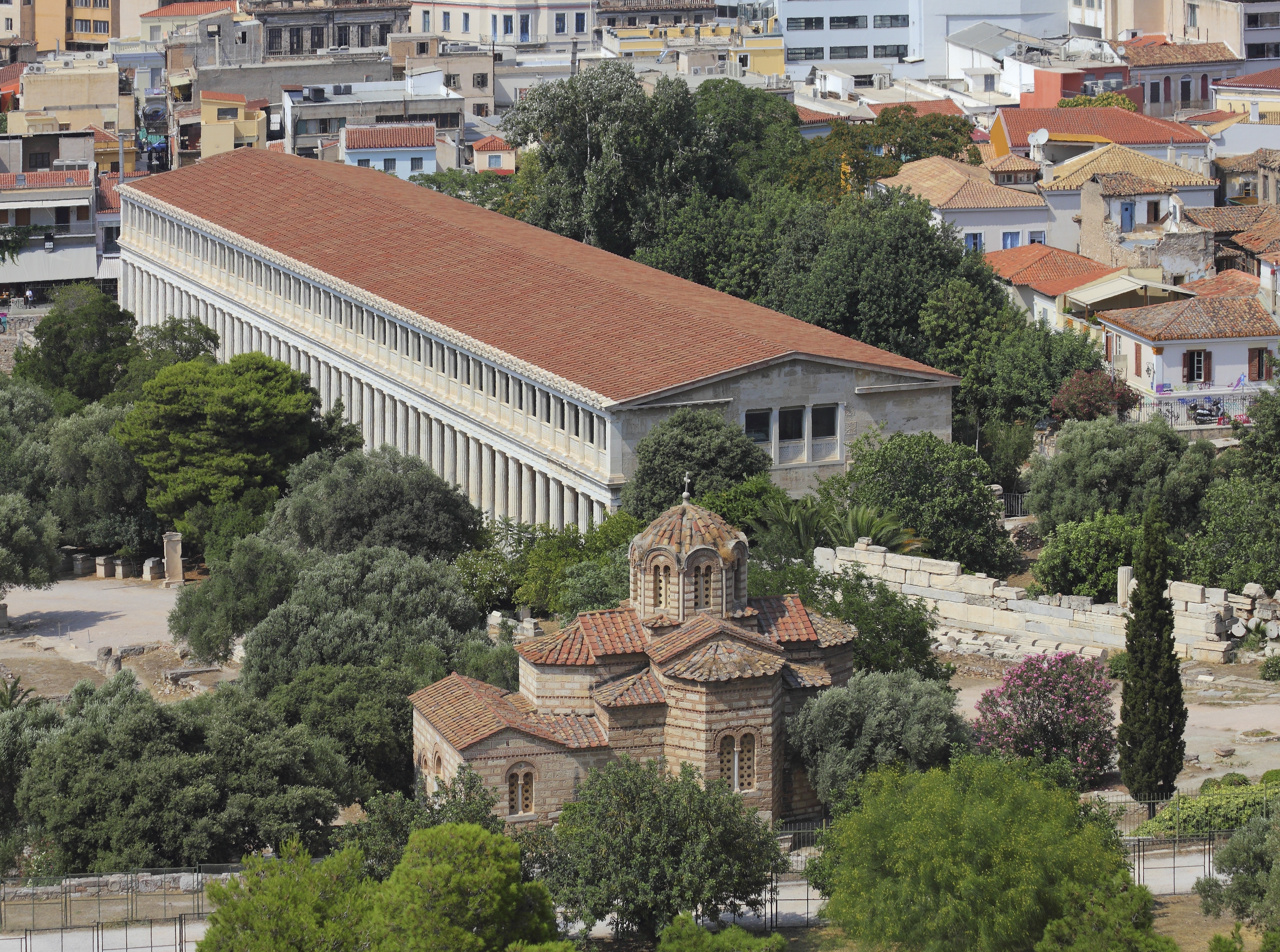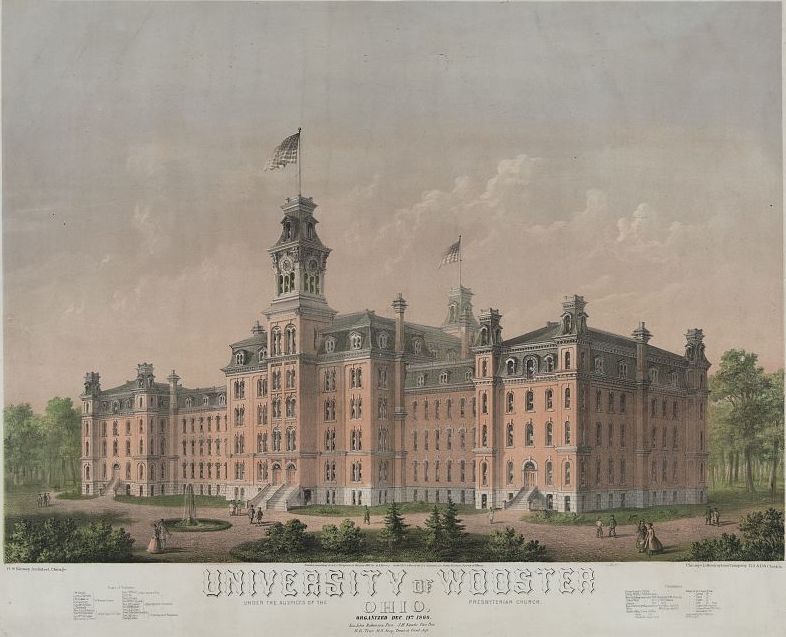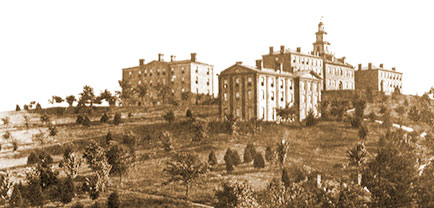|
Kavousi Kastro
Kavousi Kastro (also Kastro; el, Κάστρο) is an archaeological site in eastern Crete, Greece, about 1.4 km southeast of the modern village of Kavousi, a historic village in the municipality of Ierapetra in the prefecture of Lasithi. Situated on a steep and rocky peak at an elevation of 713 m above sea level in the northern foothills of the Thripti Mountains, the site overlooks the Gulf of Mirabello and the northern Isthmus of Ierapetra. “Kastro” (“Citadel“ or “Castle”) is a local toponym; the ancient name of the site is unknown. The Kastro is best known as a defensible “refuge” settlement of the “Greek Dark Ages”, inhabited from the early 12th to the mid-7th centuries BCE. Most of the visible architectural remains on the site belong to the Late Geometric–Early Orientalizing phases of occupation (8th to 7th centuries BCE). History of the site Investigations by the Kavousi Project have demonstrated that a settlement on the Kastro was occupied con ... [...More Info...] [...Related Items...] OR: [Wikipedia] [Google] [Baidu] |
Archaeology
Archaeology or archeology is the scientific study of human activity through the recovery and analysis of material culture. The archaeological record consists of artifacts, architecture, biofacts or ecofacts, sites, and cultural landscapes. Archaeology can be considered both a social science and a branch of the humanities. It is usually considered an independent academic discipline, but may also be classified as part of anthropology (in North America – the four-field approach), history or geography. Archaeologists study human prehistory and history, from the development of the first stone tools at Lomekwi in East Africa 3.3 million years ago up until recent decades. Archaeology is distinct from palaeontology, which is the study of fossil remains. Archaeology is particularly important for learning about prehistoric societies, for which, by definition, there are no written records. Prehistory includes over 99% of the human past, from the Paleolithic until the adven ... [...More Info...] [...Related Items...] OR: [Wikipedia] [Google] [Baidu] |
Geometric Art
Geometric art is a phase of Greek art, characterized largely by geometric motifs in vase painting, that flourished towards the end of the Greek Dark Ages, . Its center was in Athens, and from there the style spread among the trading cities of the Aegean. The Greek Dark Ages lasted from and include two periods, the Protogeometric period and the Geometric period (or Geometric art), in reference to the characteristic pottery style. The vases had various uses or purposes within Greek society, including, but not limited to, funerary vases and symposium vases. Funerary context Funerary vases not only depicted funerary scenes, but they also had practical purposes, either holding the ashes or being used as grave markers. Relatives of the deceased conducted burial rituals that included three parts: the ''prothesis'' ''(''laying out of the body), the ''ekphora'' (funeral procession), and the interment of the body or cremated remains of the body. To the Greeks, an omission of a proper b ... [...More Info...] [...Related Items...] OR: [Wikipedia] [Google] [Baidu] |
Archaeological Museum Of Agios Nikolaos
The Archaeological Museum of Agios Nikolaos is a museum in Agios Nikolaos, Crete, Greece Greece,, or , romanized: ', officially the Hellenic Republic, is a country in Southeast Europe. It is situated on the southern tip of the Balkans, and is located at the crossroads of Europe, Asia, and Africa. Greece shares land borders with .... It is currently closed for restoration (date of this edit is 13 October 2015). No re-opening date is available. , Retrieved on May 7, 2008 Room 1 The largest collection, displaying items excavated at Agia Fotia cemetery near Sitia is housed in the first room. The room also contains many notable vases and several hundred bronze blades of differing shapes and level of sharpness also found in the graves of Agia Fotia. Fish hooks dating back to early Minoan Crete ar ...[...More Info...] [...Related Items...] OR: [Wikipedia] [Google] [Baidu] |
Kavousi Vronda
Kavousi Vronda (also Vronda; el, Βροντάς or Βρόντας) is an archaeological site in eastern Crete, Greece, located about 1.25 km south of the modern village of Kavousi, a historic village in the municipality of Ierapetra in the prefecture of Lasithi. It is situated in the northern foothills of the Thripti Mountains overlooking the Gulf of Mirabello, at an elevation of 427 m above sea level. The ancient name of the site is unknown. "Vronda" ("Thunder Hill"), as it was called by the pioneering archaeologist Harriet Boyd awesat the beginning of the 20th century, is a local toponym; the entire ridge and surrounding area are also referred to as "Xerambela" ("Dry Vineyards"; el, Ξεράμπελα). Most of the visible remains on the site belong to a "Dark Age" settlement dating to the Late Minoan IIIC period (c. 1170–1050 BCE) and a slightly later, Early Iron Age cemetery (c. 1050–675 BCE). History of the site Investigations by the Kavousi Project have recov ... [...More Info...] [...Related Items...] OR: [Wikipedia] [Google] [Baidu] |
Greek Ministry Of Culture
The Ministry of Culture and Sports ( el, Υπουργείο Πολιτισμού και Αθλητισμού) is the government department of Greece entrusted with preserving the country's cultural heritage, promoting the arts, and overseeing sport through the subordinate General Secretariat for Sports. The incumbent minister is Lina Mendoni. The Deputy Minister for Modern Culture is Nicholas Yatromanolakis, and the Deputy Minister for Sports is . History This ministry was established in 1971 as the Ministry of Culture and Sciences () and it was renamed the Ministry of Culture () on 26 July 1985. On 7 October 2009, it was merged with the Ministry of Touristic Development to form the Ministry of Culture and Tourism (). It ceased to exist on 21 June 2012, when the Ministry of Tourism was re-established and the culture portfolio was absorbed by the Ministry of Education, Lifelong Learning and Religious Affairs to form the Ministry of Education, Religious Affairs, Culture and Sports ... [...More Info...] [...Related Items...] OR: [Wikipedia] [Google] [Baidu] |
Greek Archaeological Service
The Greek Archaeological Service ( el, Αρχαιολογική Υπηρεσία) is a state service, under the auspices of the Greek Ministry of Culture, responsible for the oversight of all archaeological excavations, museums and the country's archaeological heritage in general. It is the oldest such service in Europe, being founded in 1833, immediately after the establishment of the modern Greek state.Patrizio (2009), p. 155 Notable members * Semni Karouzou *Venetia Kotta See also * List of museums in Greece * Central Archaeological Council * Archaeological Society of Athens * Ephorate of Underwater Antiquities References Sources * * External links The Historical Archive of the Archaeological Service Archaeology of Greece National archaeological organizations 1833 establishments in Greece Archaeological Archaeology or archeology is the scientific study of human activity through the recovery and analysis of material culture. The archaeological r ... [...More Info...] [...Related Items...] OR: [Wikipedia] [Google] [Baidu] |
American School Of Classical Studies At Athens
, native_name_lang = Greek , image = American School of Classical Studies at Athens.jpg , image_size = , image_alt = , caption = The ASCSA main building as seen from Mount Lykavittos , latin_name = , other_name = , former_name = , motto = , motto_lang = , mottoeng = , established = 1881 , closed = , type = Overseas Research Center / Higher Education , parent = , affiliation = , religious_affiliation = , academic_affiliation = , endowment = , budget = , officer_in_charge = , chairman = , chairperson = , chancellor = , president = , vice-president = , superintendent = , provost = , vice_chancellor = , rector = , principal = , dean = , director = , head_label = , head = , academic_staff = , administrative_staff = , students = , undergrad = , postgrad = , doctoral = , other = , city = Athens , state = , province = , country = Greece , coor = , campus = urban , language = , free_label = , fr ... [...More Info...] [...Related Items...] OR: [Wikipedia] [Google] [Baidu] |
University Of Minnesota
The University of Minnesota, formally the University of Minnesota, Twin Cities, (UMN Twin Cities, the U of M, or Minnesota) is a public university, public Land-grant university, land-grant research university in the Minneapolis–Saint Paul, Twin Cities of Minneapolis and Saint Paul, Minnesota, United States. The Twin Cities campus comprises locations in Minneapolis and Falcon Heights, Minnesota, Falcon Heights, a suburb of St. Paul, approximately apart. The Twin Cities campus is the oldest and largest in the University of Minnesota system and has the List of United States university campuses by enrollment, ninth-largest main campus student body in the United States, with 52,376 students at the start of the 2021–22 academic year. It is the Flagship#Colleges and universities in the United States, flagship institution of the University of Minnesota System, and is organized into 19 colleges, schools, and other major academic units. The Minnesota Territorial Legislature drafted a ... [...More Info...] [...Related Items...] OR: [Wikipedia] [Google] [Baidu] |
Wabash College
Wabash College is a private liberal arts men's college in Crawfordsville, Indiana. Founded in 1832 by several Dartmouth College graduates and Midwestern leaders, it enrolls nearly 900 students. The college offers an undergraduate liberal arts curriculum in three academic divisions with 39 majors. History The college was initially named "The Wabash Teachers Seminary and Manual Labor College", a name shortened to its current form by 1851. Many of the founders were Presbyterian ministers, yet nevertheless believed that Wabash should be independent and non-sectarian. Patterning it after the liberal arts colleges of New England, they resolved "that the institution be at first a classical and English high school, rising into a college as soon as the wants of the country demand." Among these ministers was Caleb Mills, who became Wabash College's first faculty member. Dedicated to education in the then-primitive Mississippi Valley area, he would come to be known as the father of the Ind ... [...More Info...] [...Related Items...] OR: [Wikipedia] [Google] [Baidu] |
College Of Wooster
The College of Wooster is a private liberal arts college in Wooster, Ohio. Founded in 1866 by the Presbyterian Church as the University of Wooster, it has been officially non-sectarian since 1969 when ownership ties with the Presbyterian Church ended. From its creation, the college has been a co-educational institution. It enrolls about 2,000 students and is a member of The Five Colleges of Ohio, Great Lakes Colleges Association, and the Association of Presbyterian Colleges and Universities. History Founded as the University of Wooster in 1866 by Presbyterians, the institution opened its doors in 1870 with a faculty of five and a student body of thirty men and four women. Ephraim Quinby, a Wooster citizen, donated the first , a large oak grove situated on a hilltop overlooking the town. After being founded with the intent to make Wooster open to everyone, the university's first Ph.D. was granted to a woman, Annie B. Irish, in 1882. The first black student, Clarence Allen, beg ... [...More Info...] [...Related Items...] OR: [Wikipedia] [Google] [Baidu] |
University Of Tennessee
The University of Tennessee (officially The University of Tennessee, Knoxville; or UT Knoxville; UTK; or UT) is a public land-grant research university in Knoxville, Tennessee. Founded in 1794, two years before Tennessee became the 16th state, it is the flagship campus of the University of Tennessee system, with ten undergraduate colleges and eleven graduate colleges. It hosts more than 30,000 students from all 50 states and more than 100 foreign countries. It is classified among "R1: Doctoral Universities – Very high research activity". UT's ties to nearby Oak Ridge National Laboratory, established under UT President Andrew Holt and continued under the UT–Battelle partnership, allow for considerable research opportunities for faculty and students. Also affiliated with the university are the Howard H. Baker Jr. Center for Public Policy, the University of Tennessee Anthropological Research Facility, and the University of Tennessee Arboretum, which occupies of nearby Oak R ... [...More Info...] [...Related Items...] OR: [Wikipedia] [Google] [Baidu] |

.jpg)





